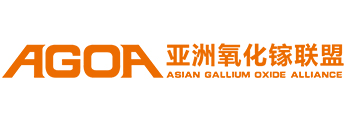

【International Papers】Simulation and interpretation of zinc and nitrogen dopants induced defect emissions in monoclinic gallium oxide
日期:2024-08-23阅读:569
Researchers from the Bangladesh University of Engineering and Technology have published a dissertation titled "Simulation and interpretation of zinc and nitrogen dopants induced defect emissions in monoclinic gallium oxide " in Materials Today Physics.
Abstract
Zinc (Zn) and nitrogen (N) are potential acceptor dopants for inducing visible emissions and p-type conductivity in monoclinic gallium oxide (β-Ga2O3), however, the poor understanding of these dopants and their recombination process severely limited the optoelectronic applications. Here, we investigate the zinc (Zn) and nitrogen (N) dopants-induced intraband states and the broadening of defect emission bands due to vibronic coupling of highly transparent monoclinic gallium oxide (β-Ga2O3) films through chemical and optical analyses, as well as density function theory. Incorporating Zn and N in β-Ga2O3 shifts the valence band edge towards the Fermi levels and introduces band tail states above the valence band maximum. The emission band from pure β-Ga2O3 becomes significantly broad with the incorporation of Zn and N resulting in two additional emission bands: green luminescence (GL) and red luminescence (RL) along with the characteristic ultraviolet luminescence (UVL) and blue luminescence (BL) of pristine β-Ga2O3. Furthermore, the defect states responsible for these UVL, BL, GL, and RL emissions and their phonon coupling strengths are estimated by simulating the spectral line shape of these emission bands using the configuration coordinate model. The simulation results indicate that the Zn and N dopants-induced intraband states are responsible for the GL, and RL bands. These intraband states are acceptors, which provide p-type conductivity in β-Ga2O3 film.
DOI:doi.org/10.1016/j.mtphys.2024.101503


